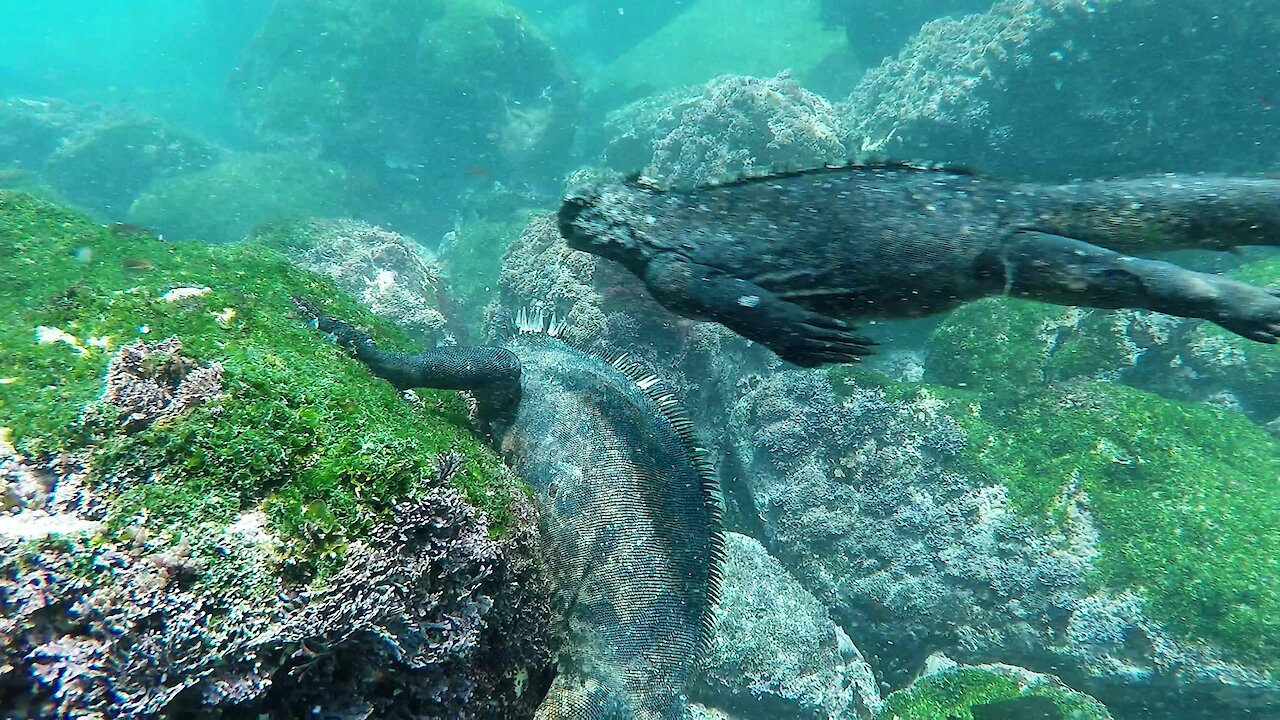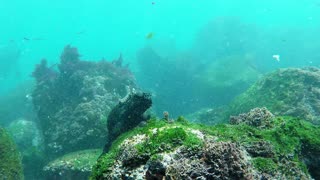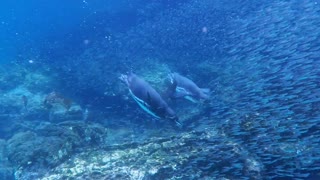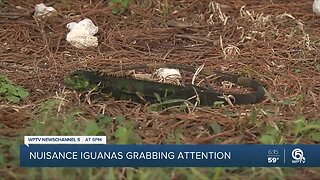Premium Only Content

These Marine Iguanas of the Galapagos are just like mini dinosaurs
The Galapagos Islands are home to some of the world's most unique beautiful creatures. They are also home to some of the world's most bizarre. They are famous for the species that have evolved and adapted to life on this hostile and unforgiving corner of the planet. The most iconic of these species are the Galapagos giant tortoises, the blue-footed boobies, and the famous Darwin finches that played a large role in Charles Darwin's theory of evolution.
But equally bizarre and iconic is the marine iguana that lives only here, in the Galapagos. Iguanas are large lizards that make their homes in the trees, on the ground, and even underground. Some climb and some burrow, but all are completely land dwellers and almost never venture into the water. Except for this species of iguana.
The marine iguana adapted over time to the lack of vegetation on the Galapagos Islands. Because droughts here can last for entire seasons and plants become dormant, food becomes almost non-existent during the summer months. Rather than perish, marine iguanas began eating the algae that grows in the inter-tidal regions along rocky shores. Capable of holding their breath up to 30 minutes and diving as deep as 30m (100 feet), marine iguanas eat a large amount in a short feeding period each day. They are cold-blooded reptiles and they must warm themselves in the sun before entering the cold water to forage for food.
Although marine iguanas can reach 60 years of age, their typical life cycle is 10-12 years in the wild. Famous, not only for their ability to swim and feed underwater, but also for their dinosaur-like appearance, marine iguanas are sometimes referred to as "mini Godzilla's" after the fictional movie character, Godzilla. The shortened snout of the marine iguana and the scaly faces resemble the giant lizard closely.
Marine iguanas have evolved in other ways, such as developing special glands that allow them to collect the salt from their water intake and food, and expel it through their nostrils. This special adaptation is crucial to survival in a world where fresh water is largely inaccessible for them.
Marine iguanas have an incredible ability to decrease their size in response to food shortages. While many creatures can metabolize fat stores, this decreasing their mass, the marine iguana can also decrease its length, being able to shorten its body by as much as 20% in a relatively short period. It has been discovered that bone length also shortens during this time.
Marine iguanas are capable swimmers, using their large tails for propulsion. Scuba divers in the Galapagos Islands consider the marine iguanas to be among the "must see" creatures of the ocean, and many make a trip to the bays that border the feeding areas of these amazing animals. The iguanas appear very unconcerned by the presence of a respectful scuba diver and it is not difficult to get a close look at these creatures feeding on algae beneath the waves.
-
 0:47
0:47
WildCreatures
1 month ago $2.09 earnedGopher hits the snooze button and goes back to sleep in the sunshine
23.9K7 -
 1:57
1:57
WildCreatures
6 years ago $15.79 earnedThese diving marine iguanas look like a prehistoric Aquaman!
1.97K2 -
 1:07
1:07
WildCreatures
6 years ago $0.52 earnedGalapagos marine iguanas are one of nature's most unusual creatures
6.8K -
 2:09
2:09
Renato_Lima_DiveChannel
6 years ago $0.65 earnedGalapagos Underwater marine wildlife
1061 -
 3:08
3:08
AFV
6 years agoWith Friends Like These...
21.2K -
 2:23
2:23
WPTV
5 years agoFalling iguanas
81 -
 3:05
3:05
AFV
6 years agoJust TRY Not to Laugh at these Funny Videos
226 -
 4:32
4:32
WMAR
6 years agoCalvert Marine Museum
12 -
 2:18
2:18
WPTV
5 years agoIguanas were falling from trees
51 -
 0:26
0:26
KERO
5 years agoRemains of Marine coming home
41